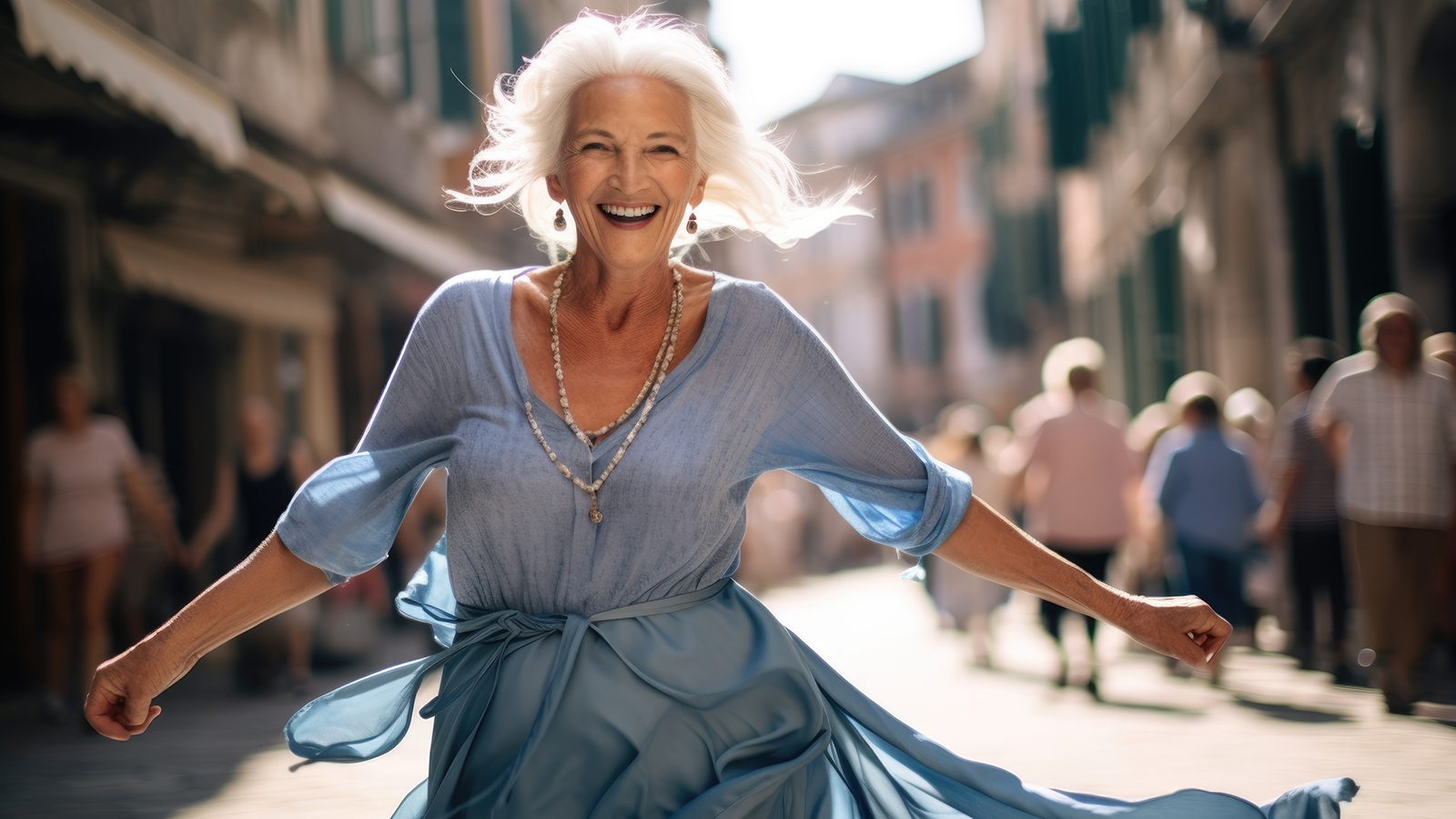Learn the secrets to a longer life.
In an age where the quest for the fountain of youth often leads us down aisles of anti-aging creams and miracle supplements, there exist pockets of the world where the secret to longevity isn’t bottled up. It’s lived. These pockets, known as Blue Zones, harbor communities where living a century old isn’t rare. Instead, a longer life is expected.
In these unique regions, 100 candles on a birthday cake are not an anomaly but a testament to a lifestyle many of us have yet to uncover.
As you journey through this article, you’ll discover the fascinating lifestyle elements and secrets that make Blue Zones the intriguing enclaves of longevity they are. So, if you’ve ever dreamt of a life filled with more candles than most cakes can hold, read on.
What Are the Blue Zones?
Imagine picturesque villages nestled among fertile hills, sun-drenched islands with azure waters, or tight-knit communities within modern cities. These serene and vibrant locales are home to the renowned Blue Zones – five distinct regions worldwide where the inhabitants don’t just survive; they thrive well into their golden years.
Sound too good to be true? Here’s the thing – these places exist.
Blue Zones are regions where people live significantly longer and healthier lives than the rest of the population. These areas, researched and popularized by Dan Buettner in collaboration with National Geographic, are notable for the number of centenarians they boast. Besides, they have far fewer diseases that commonly plague the Western world.

Five Blue Zones and the Lifestyle Factors Contributing to a Longer Life
This article will examine five communities within Blue Zones and how various lifestyle choices contribute to a longer life.
While each of these regions has its unique characteristics, they share foundational principles that contribute to the longevity of their residents. Read on to learn why we should incorporate their habits into our lives for a longer, more fulfilling journey on this Earth.
Ikaria, Greece
Some call the island the spot where people forget to die. Ikaria boasts a population among the lowest rates of middle-aged mortality and dementia. With its Mediterranean diet and laid-back lifestyle, this Grecian haven stands out as a prime example of the Blue Zones phenomenon.
The Mediterranean diet, renowned worldwide for its health benefits, is at its most authentic here. Greeks eat a diet with olive oil, whole grains, vegetables, and a moderate amount of fish. But it’s not just about the ingredients but also the manner of consumption. Ikarians frequently enjoy their meals with family and friends, making dining a communal and relaxed affair.
The rugged terrain of Ikaria means that residents naturally get a workout, whether tending to their gardens, walking up hills, or participating in local dances. Physical activity isn’t a task on a checklist; it’s an integrated part of their day.
Social interactions are a daily affair in Ikaria. From communal meals to gatherings in local squares, Ikarians often find themselves amidst friends and family, sharing stories, laughter, and support. This frequent socialization fosters a sense of belonging, decreasing feelings of isolation or loneliness that plague older age.
Routines are simple yet profoundly fulfilling in the slow-paced life of Ikaria. Whether it’s tending to their olive groves, enjoying a midday siesta, or gathering in the town square in the evenings, these daily rituals offer Ikarians a structured, purposeful existence.
Okinawa, Japan
These islands in the southernmost part of Japan are home to some of the world’s oldest people, especially women. The Okinawans’ strong sense of community, a diet rich in vegetables and tofu, and traditions emphasizing a sense of purpose have created an environment conducive to longevity.
The traditional Okinawan diet is a testament to the Hara Hachi Bu principle, which means eating until 80% complete. Focusing on an array of vegetables and legumes, a few potatoes, and a minimal meat intake emphasizes nutrient density and moderation.
Traditional activities such as tai chi and gardening keep the Okinawans active. Moreover, many residents practice the concept of “ikigai,” or a reason for being, which motivates them to stay actively involved in their community.
The Okinawans have a beautiful tradition called “moai,” a group of close friends that commit to each other for life. These groups offer emotional, and often financial, support throughout their lifetimes, proving that strong social ties can be a buoyant force against life’s many adversities.
From a young age, Okinawans learn the concept of “ikigai,” a reason for waking up in the morning. Whether through their work, art, or family, this intrinsic sense of purpose keeps them mentally agile and engaged with life, even into their advanced years.
Ogliastra Region, Sardinia
In the rugged highlands of this Italian region, you’ll find a high concentration of centenarian men. Close-knit families, a diet rich in whole grains, and regular physical activity, given the region’s mountainous terrain, play a significant role in the long lives of its inhabitants.
Sardinians consume a primarily plant-based diet complemented with lean meats like fish and lamb. Their consumption of Cannonau wine, rich in polyphenols, in moderation, is believed to offer cardiovascular benefits.
Shepherding remains a common profession in this mountainous region. The act of herding sheep over steep terrains provides natural cardiovascular benefits. Communal activities, including dances and festivals, ensure regular movement and social interaction.
Familial bonds are paramount in Sardinia. Multiple generations often live under the same roof, offering emotional support and shared responsibilities. This multi-generational living ensures older adults feel valued, respected, and cared for, significantly impacting their mental well-being.
For many Sardinians, life revolves around the family and the land. Daily tasks, from farming to cooking, are carried out with a deep sense of duty and reverence. This connection to the land and family offers a daily routine that’s both grounding and fulfilling.
Loma Linda, California
Standing apart from the typical Western lifestyle, Loma Linda’s large Seventh-day Adventist community observes a unique health-focused living. They prioritize a vegetarian diet, regular exercise, and a day of rest every week, significantly contributing to their extended life span.
Here, the emphasis is on a vegetarian diet, abundant in nuts, beans, whole grains, and water. The Seventh-day Adventist community also abstains from smoking and excessive alcohol consumption, contributing to their overall health.
The community strongly emphasizes outdoor activities. With the sunny climate, why not? From nature walks on Sabbath to regular community group exercises, the focus is on consistent, moderate physical activity that also serves as a means of social connection and spiritual reflection.
The Seventh-day Adventist community in Loma Linda thrives on fellowship. Community gatherings, group activities, and church services ensure that community members are frequently in touch, reinforcing bonds and providing a solid support system.
The routine of the Sabbath in this town is more than just a religious obligation. It’s a day of rest, reflection, and connection, providing a rhythmic pause that recharges both body and soul.
Nicoya Peninsula, Costa Rica
In this lush region of Costa Rica, the residents live by the “plan de vida” or “reason to live.” With a diet centered around beans, rice, and corn, as well as strong social and family ties, the Nicoyans exemplify the essence of the Blue Zones.
Nicoyans swear by their staples – beans, rice, and corn. These, combined with tropical fruits rich in antioxidants and a consumption pattern that makes the midday meal the largest, align their eating habits with their body’s circadian rhythm.
Many Nicoyans are involved in farming and other physical labor, ensuring they stay active. Additionally, consistently rising with the sun and sleeping early ensures they align their activities with their natural circadian rhythm, optimizing energy levels and health.
In Nicoya, social interactions are woven into the fabric of daily life. Whether it’s a daily chat with a neighbor, family gatherings, or community festivals, Nicoyans rarely find themselves isolated. This consistent social engagement acts as a buffer against the stressors of life.
These Costa Ricans live by the rhythms of nature. Rising with the sun, working on their farms, and retiring early, their lives are a testament to the importance of aligning one’s routine with the natural world. This harmony offers them a clear sense of direction and balance.
Final Thoughts on How Blue Zones Connect to a Longer Life
The allure of the Blue Zones extends beyond the dream of longevity. It’s a glimpse into a way of life where every moment is cherished, every meal savored, and every day full of purpose. These regions offer more than just a blueprint for reaching a ripe old age. Instead, they offer insights into living a life of quality, connection, and joy.
The lessons from the Blue Zones are both profound and simple. They remind us that good health isn’t just about the absence of disease or the number of years we live. It’s about the laughter we share with friends, the meals we enjoy with family, and the purpose that drives us daily. It also means developing the small routines that anchor us.
While we may not reside in one of these healthy lifestyle zones, the principles they embody are universally accessible. We can adopt a more plant-centric diet to weave movement into our daily lives and nurture our social connections. We also learn to embrace life with a positive and purposeful mindset.
The Blue Zones are beacons of better health in a world that often chases quick fixes and transient trends. So cheers to a healthier, longer life!






















